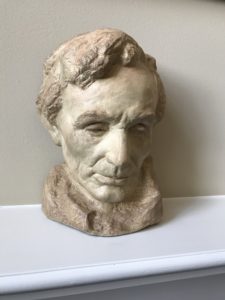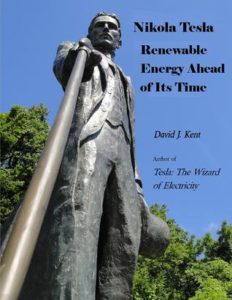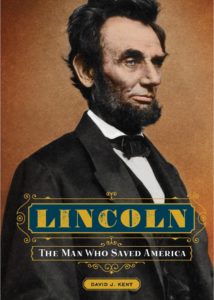 Abraham Lincoln is everywhere. I just saw his bust in a park in Havana, Cuba. I even saw an art exhibit in the Fine Arts Museum of Cuba that included a figure of Lincoln (and missed the other three busts/statues of him there). He’s been seen in Singapore, Edinburgh, Oslo, Mexico City, and other far reaching places. And, of course, impressions of Lincoln are in many places in the United States, especially, and not surprisingly, in Illinois, the Land of Lincoln. As my Chasing Abraham Lincoln tour(s) continue, Part 3 takes me back to Illinois and points coming and going.
Abraham Lincoln is everywhere. I just saw his bust in a park in Havana, Cuba. I even saw an art exhibit in the Fine Arts Museum of Cuba that included a figure of Lincoln (and missed the other three busts/statues of him there). He’s been seen in Singapore, Edinburgh, Oslo, Mexico City, and other far reaching places. And, of course, impressions of Lincoln are in many places in the United States, especially, and not surprisingly, in Illinois, the Land of Lincoln. As my Chasing Abraham Lincoln tour(s) continue, Part 3 takes me back to Illinois and points coming and going.
For those who followed my Chasing Abraham Lincoln tours (Parts 1 and 2) last year, the first trip took me through Lincoln’s early life in Kentucky and Indiana, along with a stop to see the assassination chair at the Ford Museum in Dearborn, Michigan. Part 2 took me into the heart of Illinois, following in Lincoln’s footsteps through all seven Lincoln-Douglas debate sites, the Illinois & Michigan Canal, and a multitude of other towns and cities with statues, gravestones, and log cabins.
There have been other tours not officially designated with a Part Number, including trips to Charleston, South Carolina where the Civil War started, to Hampton Roads where the “Battle of the Ironclads” took place, and to Gettysburg for the annual Lincoln Forum. On a separate trip a few years ago I explored Lincoln’s Springfield and the Eighth Judicial Circuit. I’ve also made frequent visits to DC-area landmarks.
This official “Part 3” takes me back to Illinois. Details are still being worked out but on the way there I plan to stop in key places in Ohio and Indiana, plus the place where the Lincoln’s crossed into Illinois. After participating in the LEAD: Lincoln’s Path to Leadership program in Jacksonville, I’ll continue north to visit places I missed on my previous Illinois trip, plus forays into Wisconsin and Michigan to see statues in Milwaukee, Kenosha, and Kalamazoo. On the way back I plan to visit a new national park in Indiana and the Flight 93 Memorial in Pennsylvania.
As with last year, the exact timing and locations will likely change on the fly. I’ll do my best to emulate the late Tony Horwitz (Confederates in the Attic; Spying on the South) and talk to as many local people as I can to get their views on Lincoln.
Until then, feel free to check out some of my previous Chasing Abraham Lincoln trips (click and scroll for stories, or simply type “Chasing Abraham Lincoln” into the Search box above).
David J. Kent is an avid science traveler and the author of Lincoln: The Man Who Saved America, in Barnes and Noble stores now. His previous books include Tesla: The Wizard of Electricity and Edison: The Inventor of the Modern World and two specialty e-books: Nikola Tesla: Renewable Energy Ahead of Its Time and Abraham Lincoln and Nikola Tesla: Connected by Fate.
Check out my Goodreads author page. While you’re at it, “Like” my Facebook author page for more updates!



 In June I’ll have the privilege of participating in the annual
In June I’ll have the privilege of participating in the annual  They say there are over 15,000 books and pamphlets published about Abraham Lincoln. The truth is, no one actually knows. As a way to find out, I’ve started the
They say there are over 15,000 books and pamphlets published about Abraham Lincoln. The truth is, no one actually knows. As a way to find out, I’ve started the  It’s official. The room once used by Abraham Lincoln has been designated the Lincoln Room by House Resolution 1063. It’s a fitting tribute both to the 16th President of the United States and to Past-President of the Lincoln Group of DC, John Elliff. I was privileged to attend the dedication ceremony on May 1, 2019 in Statuary Hall of the U.S. Capitol Building in Washington, D.C.
It’s official. The room once used by Abraham Lincoln has been designated the Lincoln Room by House Resolution 1063. It’s a fitting tribute both to the 16th President of the United States and to Past-President of the Lincoln Group of DC, John Elliff. I was privileged to attend the dedication ceremony on May 1, 2019 in Statuary Hall of the U.S. Capitol Building in Washington, D.C.













 The Civil War theme didn’t stop there. I also visited an old
The Civil War theme didn’t stop there. I also visited an old 
 According to the Library of Congress’s Abraham Lincoln and Civil War expert Michelle Krowl, and quoting from the book On These Walls: Inscriptions & Quotations in the Library of Congress
According to the Library of Congress’s Abraham Lincoln and Civil War expert Michelle Krowl, and quoting from the book On These Walls: Inscriptions & Quotations in the Library of Congress
 On April 4, 1865, President Abraham Lincoln took his son Tad into the city of Richmond, Virginia. The city had fallen the day before into Union hands two days before. It was Tad’s 12th birthday.
On April 4, 1865, President Abraham Lincoln took his son Tad into the city of Richmond, Virginia. The city had fallen the day before into Union hands two days before. It was Tad’s 12th birthday.
 After an unfortunate breakup with a woman named Mary Owens, and with negotiations over moving the capital from Vandalia to Springfield under way, Abraham Lincoln decided to leave New Salem for the big city. The move was advantageous.
After an unfortunate breakup with a woman named Mary Owens, and with negotiations over moving the capital from Vandalia to Springfield under way, Abraham Lincoln decided to leave New Salem for the big city. The move was advantageous. an article published in
an article published in 







